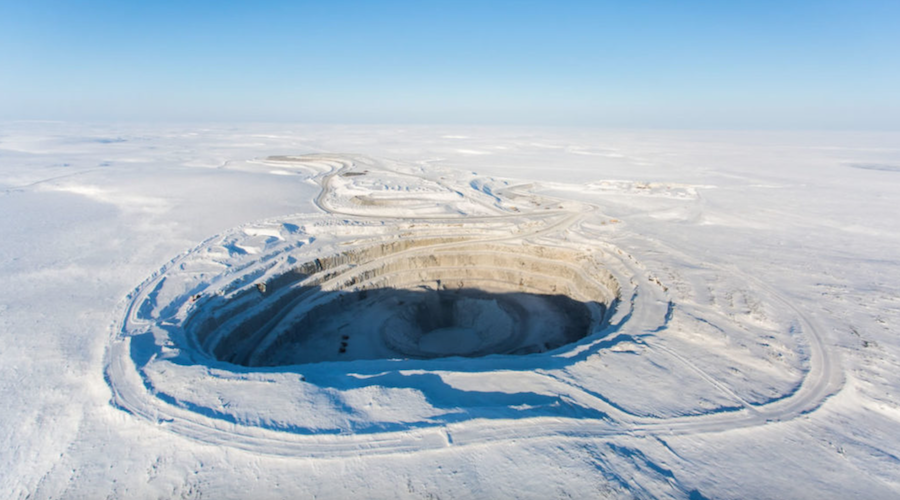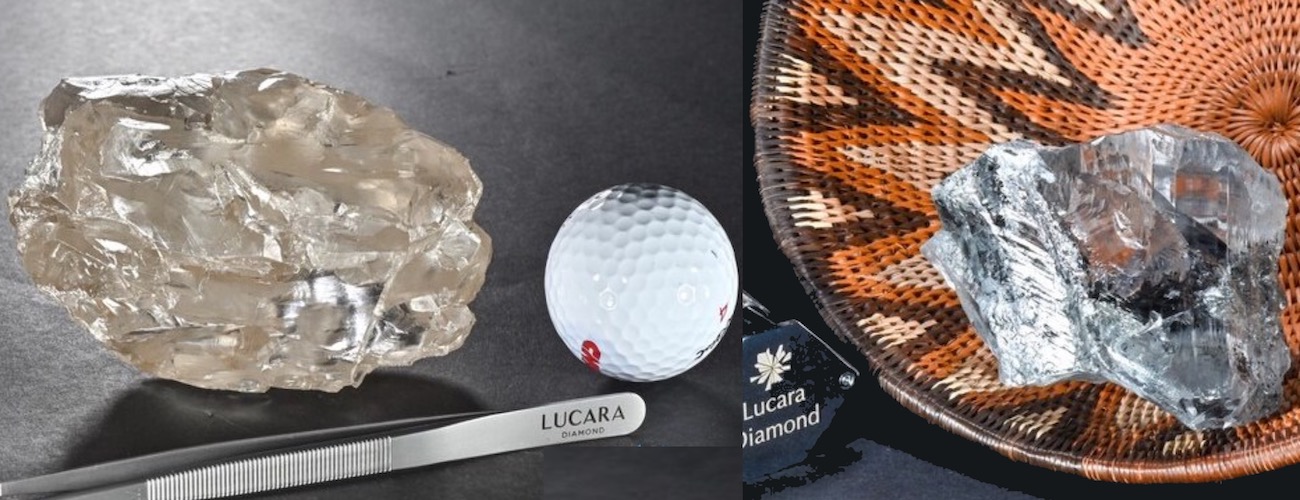Ashton waltzes to centre stage in Quebec diamond play
Diamonds may be a girl’s best friend, but they are also proving to be the best friend of exploration company Ashton Mining of Canada Ltd. and its 50/50 joint venture partner SOQUEM Inc. The Foxtrot property diamond play in north-central Quebec, operated by Ashton, is one of the most exciting exploration projects in Canada today. We caught up with Ashton’s president Robert Boyd and asked him about the work currently going on.
Located in the Otish Mountains 300 km north of Chibougamau, Que., the Foxtrot property was initially staked in 2000 during a regional reconnaissance exploration program for diamonds. In late 2001, results from heavy mineral sampling and geophysical surveys by Ashton led to a drill program that intersected kimberlitic rock in two of four anomalies on the property. The kimberlite was soon after identified as diamondiferous, and Ashton has not looked back since. According to the Quebec government, the discovery of diamonds on the Foxtrot property led to the province’s largest land-staking rush ever.
Ashton has not limited its expertise to exploration. The company is able to perform analyses in-house at its laboratory located in North Vancouver. The laboratory performs a full range of geotechnical analyses required for diamond exploration including sample processing, caustic fusion analysis, dense media separation analysis, and concentrate observation for indicator minerals and diamonds. It uses state-of-the-art analytical techniques, many of which are unique to Ashton and developed by its parent company, Ashton Mining Ltd. of Australia with over 20 years experience in the diamond fields of Australia.
The Foxtrot property covers 200,000 ha and extends approximately 50 km north-south by 50 km east-west. It lies within the eastern portion of the Superior Province, referred to as the Ungava Craton. The property is underlain by Archaean-age granite and granite gneiss. In the south-central part of the property, the granite gneiss is intruded by a series of 550-million-year-old kimberlitic pipes named the Renard cluster. The pipes are irregular to elliptical in plan view, are steeply plunging, and vary up to 1.5 ha in cross-section. Although they are small by world standards, the grade is generally high. Diamonds have also been recovered from the Lynx dike system located only 2 km west of the Renard cluster. The system is a 3.7-km-long series of continuous or semi-continuous kimberlitic dikes comprising three diamondiferous zones termed the Lynx, Lynx North and Lynx South.
The Renard cluster is within a 2-km-long elongated area, and includes nine kimberlitic intrusions discovered so far. The core area includes Renard pipes 2, 3, 4, 8, 9 and 65. Renard 2, 3, 4 and 65 have had bulk samples of between 155 and 174 tonnes completed, with indicated diamond contents ranging between 22 and 124 carats per hundred tonnes (cpht). All combined, the 664 tonnes of kimberlitic bulk sample from Renard pipes produced 457 carats of diamonds. In addition, a mini-bulk sample of 12.2 tonnes taken from Renard 9 recovered 11.8 carats of diamonds for a grade of 97 cpht. There is an estimated 22.4 million tonnes of diamondiferous kimberlite in the Renard core area, which includes Renard 2, 3, 4, 65 and 9; 90% of the tonnage is within 200 m of surface.
The largest diamond recovered from the Renard cluster weighs 4.3 carats and was recovered from Renard 3.With the exception of Renard 1, diamonds greater than two carats in weight have been recovered from each of the Renard bodies where mini-bulk samples have been collected.
But that’s not all. The largest diamond found to date on the property is from the Lynx South zone, weighing in at 5.66 carats (see pp. 24-25 of this issue). This one has the distinction of being the largest diamond yet discovered in Quebec.
Ashton is also very encouraged by its results at the Lynx dike system. Cobbles and boulders weighing 3.87 tonnes that were collected from the Lynx zone returned 4.63 carats of diamonds for an estimated diamond grade of 120 cpht. A 4.60-tonne sample from the Lynx South zone returned 11.8 carats of diamonds (256 cpht). The 5.66-tonne sample taken from Lynx North returned 2.68 carats of diamonds (47 cpht). The combined total sample weight of 14.2 tonnes from the Lynx dike system returned 19.1 carats of diamonds, for an estimated diamond grade of 135 cpht.
The Foxtrot project has moved ahead to early-stage economic studies with favourable results. A valuation of 459 carats of diamonds completed in early 2005 by WWW International Diamond Consultants suggested a modeled value of US$88 per carat, with a US$76 minimum and US$104 maximum. This compares favourably to world average prices of US$80/carat (WWW estimate) and US$64/carat (Belgium Customs Import estimated price). In addition, these diamonds are gem quality. The colour was considered as good overall, and no low-value industrial diamonds were found.
Plans for further evaluation
There is still much work to do. In addition to the Renard and Lynx areas, in August Ashton reported discovering new diamond-bearing boulders located at sites between the Renard cluster and the Lynx dike system, which may represent new kimberlitic sources not explained by known discoveries. A 100-kg sample of these boulders was analyzed by caustic dissolution and returned a total of 279 diamonds. Kimberlitic glacial float has been discovered on the Foxtrot property in three other areas during this summer’s field season as well as several unexplained indicator mineral anomalies.
Plans for the near future include trenching the Lynx dike system to recover an estimated 30 tonnes of material at three or more locations along 1.9 km of the strike length, to be processed for diamonds by dense media separation. An exploration drilling program is also scheduled to begin in late August.
On the Renard cluster, the diamond results from the mini-bulk sampling program conducted this summer at the Renard 4, 7 and 8 pipes and a summary of updated tonnage information from the drilling of Renard 2, 7, 8, 9 and 10 are expected soon. This information will assist in the mining studies currently being conducted.
Results from the mining studies may lead to the collection of a much larger bulk sample in 2006, which would refine the current estimate of the value of Renard diamonds. This would be another major step for Ashton, which has enjoyed considerable success to date.





Comments